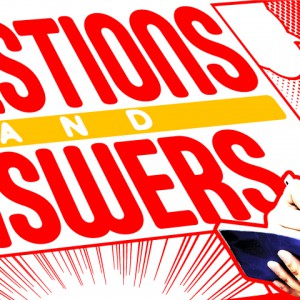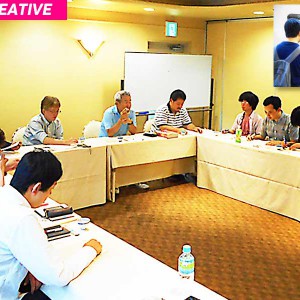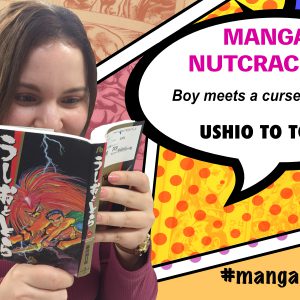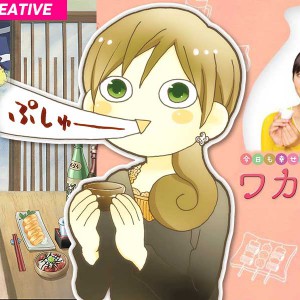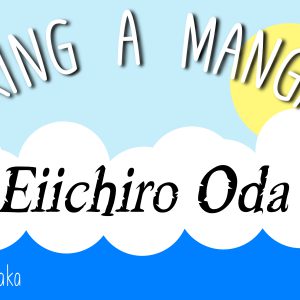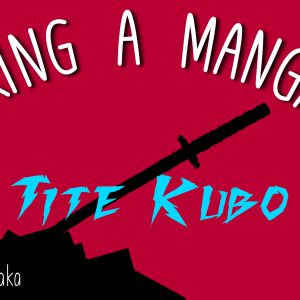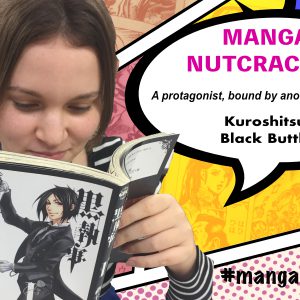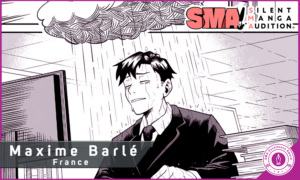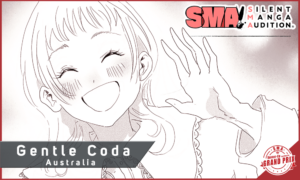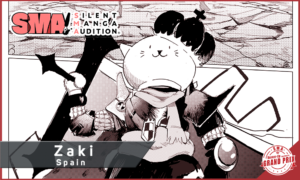BOTH IDEAS AND EDITORS GROW UP DURING A DISCUSSION
Hi guys! Mayu here!
Thank you all for all your “likes” and comments for ‘MANGA INSIDER MAYU’! From now on I’ll be reporting to you the real life of a Manga editor!
Now, I just heard that we’re having the editor’s meeting of Monthly Comic ZENON in a few hours!
I can’t afford to miss that! Let’s go take a look at what’s happening inside!

 This is the conference room on the 5th floor, where we have these important meetings.
This is the conference room on the 5th floor, where we have these important meetings.
 All the preparation for the meetings is done by the rookies of the editor’s team. They are all tremendously busy in doing things like preparing everyone’s tea, printing the copies, and so much more.
All the preparation for the meetings is done by the rookies of the editor’s team. They are all tremendously busy in doing things like preparing everyone’s tea, printing the copies, and so much more.
 In today’s meeting, there were the eight editors of the team, our president Mr. Horie, our managing director Mr. Negishi, the publication planning chief Mr. Mochida, and the four rookies of the editor’s team (including me!!).
For us rookies, it was actually the first time we even attended this meeting! We were feeling so nervous and also full of anticipation.
In today’s meeting, there were the eight editors of the team, our president Mr. Horie, our managing director Mr. Negishi, the publication planning chief Mr. Mochida, and the four rookies of the editor’s team (including me!!).
For us rookies, it was actually the first time we even attended this meeting! We were feeling so nervous and also full of anticipation.
 Since the rookies were attending the meeting for the first time, Mr. Horie gave us all some very valuable advice about being an editor!
“An editor should talk with a lot of people, and improve his language skills”
“An editor should see as many beautiful things as possible”
“An editor should try writing a business log for at least three years”
“Editors should discuss a lot, and fight a lot, about anything they do at work”
……All those words are full of wisdom! I couldn’t help but sit up straighter.
Since the rookies were attending the meeting for the first time, Mr. Horie gave us all some very valuable advice about being an editor!
“An editor should talk with a lot of people, and improve his language skills”
“An editor should see as many beautiful things as possible”
“An editor should try writing a business log for at least three years”
“Editors should discuss a lot, and fight a lot, about anything they do at work”
……All those words are full of wisdom! I couldn’t help but sit up straighter.
 Now, time to stop moving our mouths and start using our brains. The meeting moves on to the main topics, which are “the analysis based on the reader’s questionnaire” and “how to compete with the other Manga auditions held by other companies”.
Now, time to stop moving our mouths and start using our brains. The meeting moves on to the main topics, which are “the analysis based on the reader’s questionnaire” and “how to compete with the other Manga auditions held by other companies”.
 The editor in charge presents his thoughts about which Manga was popular or unpopular among the readers, and what the readers want to see on Monthly Comic ZENON. All data is based on a questionnaire that the readers have answered via mail and web. In our magazine, we really cherish the voices of all the readers who give us their opinions, such as “which Manga was amusing”, “which Manga was boring”, “which Manga made you buy our magazine”, etc.
Mr. Horie always says that “to make a good magazine which fits to the reader’s requirements, it is very important to do lots of research and come up with ideas based on that data. Something that is based on just the intuition never works”. Listening to the voices makes our work become something for everyone, not something for self-satisfaction.
By the way, this system of accepting the mails and hearing the voice of the readers was established 45 years ago by ‘Weekly Shonen JUMP’. See how much influence that magazine has on our industry?
The editor in charge presents his thoughts about which Manga was popular or unpopular among the readers, and what the readers want to see on Monthly Comic ZENON. All data is based on a questionnaire that the readers have answered via mail and web. In our magazine, we really cherish the voices of all the readers who give us their opinions, such as “which Manga was amusing”, “which Manga was boring”, “which Manga made you buy our magazine”, etc.
Mr. Horie always says that “to make a good magazine which fits to the reader’s requirements, it is very important to do lots of research and come up with ideas based on that data. Something that is based on just the intuition never works”. Listening to the voices makes our work become something for everyone, not something for self-satisfaction.
By the way, this system of accepting the mails and hearing the voice of the readers was established 45 years ago by ‘Weekly Shonen JUMP’. See how much influence that magazine has on our industry?
 Just because we are a Manga magazine, it doesn’t mean that it only contains Manga… and sometimes that extra part becomes a big reason to buy a magazine! On our March volume, we put in two extras; a serial code for a popular game “Puzzle and Dragons” in Japan, and a little book which introduces the Manga we have on our web version of ZENON- Web Comic ZENYON! The opinions about these extras are as important as the ones to the Manga itself!
Just because we are a Manga magazine, it doesn’t mean that it only contains Manga… and sometimes that extra part becomes a big reason to buy a magazine! On our March volume, we put in two extras; a serial code for a popular game “Puzzle and Dragons” in Japan, and a little book which introduces the Manga we have on our web version of ZENON- Web Comic ZENYON! The opinions about these extras are as important as the ones to the Manga itself!
 With the help of Manga auditions held by publishing companies, Manga artists can promote their drawing skills, while the publishing companies can seek new star artists. This effectiveness makes the companies compete with each other to make a better audition, in order to become popular among the Manga artists.
When it came to the part about other Manga auditions, we discussed passionately how we can specialize our Manga audition so it’s different from the others. In order to make a better magazine, it truly is important to know what’s going on in the whole industry.
With the help of Manga auditions held by publishing companies, Manga artists can promote their drawing skills, while the publishing companies can seek new star artists. This effectiveness makes the companies compete with each other to make a better audition, in order to become popular among the Manga artists.
When it came to the part about other Manga auditions, we discussed passionately how we can specialize our Manga audition so it’s different from the others. In order to make a better magazine, it truly is important to know what’s going on in the whole industry.
 Look! Here’s Mr. Hanada from last week’s post giving his all to the discussion too!
“Ever since ZENON achieved great results from the Japanese Silent Manga Audition, all the other Manga auditions have eased their requirements, and are seeking originality instead. That is making it easier for the artists to participate. Then, what can we do to let more people enter our audition?”
Look! Here’s Mr. Hanada from last week’s post giving his all to the discussion too!
“Ever since ZENON achieved great results from the Japanese Silent Manga Audition, all the other Manga auditions have eased their requirements, and are seeking originality instead. That is making it easier for the artists to participate. Then, what can we do to let more people enter our audition?”
 During the meeting, there were times when the members make jokes, and burst into laughter. Enjoying the meeting itself is important for us too- we’ve got to be able to say something amusing in any occasion, since we are in the business of creating entertainment!
During the meeting, there were times when the members make jokes, and burst into laughter. Enjoying the meeting itself is important for us too- we’ve got to be able to say something amusing in any occasion, since we are in the business of creating entertainment!
 Mr. Horie mentioned something about the future of the Silent Manga Audition too!
“ I truly want to express that Manga is essentially a story board, or in other words, a movie on paper. For that goal, I’m currently planning some new kinds of projects and competitions!”
Mr. Horie mentioned something about the future of the Silent Manga Audition too!
“ I truly want to express that Manga is essentially a story board, or in other words, a movie on paper. For that goal, I’m currently planning some new kinds of projects and competitions!”
 The meeting lasted for about an hour. Some of the participants said that today’s meeting was a bit different from usual, due to the fact that the rookies were attending, but never the less it was full of awesome stories!
The meeting lasted for about an hour. Some of the participants said that today’s meeting was a bit different from usual, due to the fact that the rookies were attending, but never the less it was full of awesome stories!
Everything discussed in the meeting is always based on the view of the readers. The opinion of those readers are regarded as very important when we think about the magazine itself. It’s not an exaggeration to say that everything we do for the magazine starts from the opinions that we get from the readers! That is, having a meeting is the beginning of everything about us! I guess the Silent Manga Audition Committee has to think of how everyone can submit their works more easily. Do you have an opinion? Or maybe an idea of what you want us to do? Do feel free to tell us anytime! And, how will the next Monthly Comic ZENON turn out? Now the heat is on, time to get busy on actually working on the creation! Next time, I’m going to ask Mr. Watanabe- the vice chief editor- about all the work an editor does! Don’t miss it!
COLUMN:Manga Terminology and Printing Manga During today’s meeting, Mr. Horie told us some episodes about the Japanese Manga terminology and Japanese printing industry. Here I’d like to introduce a part of it! In manga production, we use the term “name” (ne-mu) to refer to the “draft storyboard”. This usage of the word “name” may feel a little strange to English speakers. Further complicating matters, people in the Japanese publishing industry traditionally call anything with text on it a “name”. This eventually led to some seriously confusing uses of this term…





 Here are some photos of the original ‘CITY HUNTER’ (Wow!) As you can see, first the artist drew the manga without any dialogue. Then, the type-setters then created the actual letters (referred to as the “names”) and glued them onto sheets of paper which are then placed onto the original hand draw pages. Afterwards, tracing paper is placed on top. Instructions for the plate/photo-setters (for example “place the title logo here” or “add text with special effects here”) are then written on the tracing paper. However, later on, when people started to refer to the storyboard itself as the “name” of the Manga, you got a confusing situation where you could say “add names according to the name” (@_@)
Here are some photos of the original ‘CITY HUNTER’ (Wow!) As you can see, first the artist drew the manga without any dialogue. Then, the type-setters then created the actual letters (referred to as the “names”) and glued them onto sheets of paper which are then placed onto the original hand draw pages. Afterwards, tracing paper is placed on top. Instructions for the plate/photo-setters (for example “place the title logo here” or “add text with special effects here”) are then written on the tracing paper. However, later on, when people started to refer to the storyboard itself as the “name” of the Manga, you got a confusing situation where you could say “add names according to the name” (@_@)
 The subject of the conversation eventually changed to “how people did the photosetting”. These days, most of them are done on the computer. This is what we call Desktop Prepress, or DTP in short. However, a generation before people used films to paste on the dialogs onto the paper. And when it comes to Horie-san and Negishi-san’s generation, people used stereotypes (as in stereotypography) of rotary presses that usually publish newspapers! Such hard work!!
So, that means this conference room already contained four generations of the history of photosetting……awesome!
[catlist name=”MANGA INSIDER MAYU” thumbnail=”yes” thumbnail_size=160 content=”no” date=”yes” dateformat=”M j, Y G:i” template=page_list]
The subject of the conversation eventually changed to “how people did the photosetting”. These days, most of them are done on the computer. This is what we call Desktop Prepress, or DTP in short. However, a generation before people used films to paste on the dialogs onto the paper. And when it comes to Horie-san and Negishi-san’s generation, people used stereotypes (as in stereotypography) of rotary presses that usually publish newspapers! Such hard work!!
So, that means this conference room already contained four generations of the history of photosetting……awesome!
[catlist name=”MANGA INSIDER MAYU” thumbnail=”yes” thumbnail_size=160 content=”no” date=”yes” dateformat=”M j, Y G:i” template=page_list]

Mocchi is attending the meeting too!
 This is the conference room on the 5th floor, where we have these important meetings.
This is the conference room on the 5th floor, where we have these important meetings.
 All the preparation for the meetings is done by the rookies of the editor’s team. They are all tremendously busy in doing things like preparing everyone’s tea, printing the copies, and so much more.
All the preparation for the meetings is done by the rookies of the editor’s team. They are all tremendously busy in doing things like preparing everyone’s tea, printing the copies, and so much more.
 In today’s meeting, there were the eight editors of the team, our president Mr. Horie, our managing director Mr. Negishi, the publication planning chief Mr. Mochida, and the four rookies of the editor’s team (including me!!).
For us rookies, it was actually the first time we even attended this meeting! We were feeling so nervous and also full of anticipation.
In today’s meeting, there were the eight editors of the team, our president Mr. Horie, our managing director Mr. Negishi, the publication planning chief Mr. Mochida, and the four rookies of the editor’s team (including me!!).
For us rookies, it was actually the first time we even attended this meeting! We were feeling so nervous and also full of anticipation.
MAYU’S POINT!! : Mr. Horie, Mr. Negishi, and Mr. Mochida
The “three wise men” laid foundations for everything we do today. With years of experience in the field of manga, they served their duty as chief editors for the following magazines :
Nobuhiko Horie – Chief Editor, Weekly Shonen JUMP (1993-1996),
Tadashi Negishi – Chief Editor, Monthly Shonen JUMP (1995-1999)
Shuichi Mochida – Chief Editor, Weekly Comic BUNCH (2007-2010)
Since leaving Shueisha, the three founded Coamix Inc., the organizer of SILENT MANGA AUDITION. Alongside this duty, they still write scripts for manga titles of Comic-ZENON.
 Since the rookies were attending the meeting for the first time, Mr. Horie gave us all some very valuable advice about being an editor!
“An editor should talk with a lot of people, and improve his language skills”
“An editor should see as many beautiful things as possible”
“An editor should try writing a business log for at least three years”
“Editors should discuss a lot, and fight a lot, about anything they do at work”
……All those words are full of wisdom! I couldn’t help but sit up straighter.
Since the rookies were attending the meeting for the first time, Mr. Horie gave us all some very valuable advice about being an editor!
“An editor should talk with a lot of people, and improve his language skills”
“An editor should see as many beautiful things as possible”
“An editor should try writing a business log for at least three years”
“Editors should discuss a lot, and fight a lot, about anything they do at work”
……All those words are full of wisdom! I couldn’t help but sit up straighter.
 Now, time to stop moving our mouths and start using our brains. The meeting moves on to the main topics, which are “the analysis based on the reader’s questionnaire” and “how to compete with the other Manga auditions held by other companies”.
Now, time to stop moving our mouths and start using our brains. The meeting moves on to the main topics, which are “the analysis based on the reader’s questionnaire” and “how to compete with the other Manga auditions held by other companies”.
 The editor in charge presents his thoughts about which Manga was popular or unpopular among the readers, and what the readers want to see on Monthly Comic ZENON. All data is based on a questionnaire that the readers have answered via mail and web. In our magazine, we really cherish the voices of all the readers who give us their opinions, such as “which Manga was amusing”, “which Manga was boring”, “which Manga made you buy our magazine”, etc.
Mr. Horie always says that “to make a good magazine which fits to the reader’s requirements, it is very important to do lots of research and come up with ideas based on that data. Something that is based on just the intuition never works”. Listening to the voices makes our work become something for everyone, not something for self-satisfaction.
By the way, this system of accepting the mails and hearing the voice of the readers was established 45 years ago by ‘Weekly Shonen JUMP’. See how much influence that magazine has on our industry?
The editor in charge presents his thoughts about which Manga was popular or unpopular among the readers, and what the readers want to see on Monthly Comic ZENON. All data is based on a questionnaire that the readers have answered via mail and web. In our magazine, we really cherish the voices of all the readers who give us their opinions, such as “which Manga was amusing”, “which Manga was boring”, “which Manga made you buy our magazine”, etc.
Mr. Horie always says that “to make a good magazine which fits to the reader’s requirements, it is very important to do lots of research and come up with ideas based on that data. Something that is based on just the intuition never works”. Listening to the voices makes our work become something for everyone, not something for self-satisfaction.
By the way, this system of accepting the mails and hearing the voice of the readers was established 45 years ago by ‘Weekly Shonen JUMP’. See how much influence that magazine has on our industry?
 Just because we are a Manga magazine, it doesn’t mean that it only contains Manga… and sometimes that extra part becomes a big reason to buy a magazine! On our March volume, we put in two extras; a serial code for a popular game “Puzzle and Dragons” in Japan, and a little book which introduces the Manga we have on our web version of ZENON- Web Comic ZENYON! The opinions about these extras are as important as the ones to the Manga itself!
Just because we are a Manga magazine, it doesn’t mean that it only contains Manga… and sometimes that extra part becomes a big reason to buy a magazine! On our March volume, we put in two extras; a serial code for a popular game “Puzzle and Dragons” in Japan, and a little book which introduces the Manga we have on our web version of ZENON- Web Comic ZENYON! The opinions about these extras are as important as the ones to the Manga itself!
 With the help of Manga auditions held by publishing companies, Manga artists can promote their drawing skills, while the publishing companies can seek new star artists. This effectiveness makes the companies compete with each other to make a better audition, in order to become popular among the Manga artists.
When it came to the part about other Manga auditions, we discussed passionately how we can specialize our Manga audition so it’s different from the others. In order to make a better magazine, it truly is important to know what’s going on in the whole industry.
With the help of Manga auditions held by publishing companies, Manga artists can promote their drawing skills, while the publishing companies can seek new star artists. This effectiveness makes the companies compete with each other to make a better audition, in order to become popular among the Manga artists.
When it came to the part about other Manga auditions, we discussed passionately how we can specialize our Manga audition so it’s different from the others. In order to make a better magazine, it truly is important to know what’s going on in the whole industry.
 Look! Here’s Mr. Hanada from last week’s post giving his all to the discussion too!
“Ever since ZENON achieved great results from the Japanese Silent Manga Audition, all the other Manga auditions have eased their requirements, and are seeking originality instead. That is making it easier for the artists to participate. Then, what can we do to let more people enter our audition?”
Look! Here’s Mr. Hanada from last week’s post giving his all to the discussion too!
“Ever since ZENON achieved great results from the Japanese Silent Manga Audition, all the other Manga auditions have eased their requirements, and are seeking originality instead. That is making it easier for the artists to participate. Then, what can we do to let more people enter our audition?”
 During the meeting, there were times when the members make jokes, and burst into laughter. Enjoying the meeting itself is important for us too- we’ve got to be able to say something amusing in any occasion, since we are in the business of creating entertainment!
During the meeting, there were times when the members make jokes, and burst into laughter. Enjoying the meeting itself is important for us too- we’ve got to be able to say something amusing in any occasion, since we are in the business of creating entertainment!
 Mr. Horie mentioned something about the future of the Silent Manga Audition too!
“ I truly want to express that Manga is essentially a story board, or in other words, a movie on paper. For that goal, I’m currently planning some new kinds of projects and competitions!”
Mr. Horie mentioned something about the future of the Silent Manga Audition too!
“ I truly want to express that Manga is essentially a story board, or in other words, a movie on paper. For that goal, I’m currently planning some new kinds of projects and competitions!”
 The meeting lasted for about an hour. Some of the participants said that today’s meeting was a bit different from usual, due to the fact that the rookies were attending, but never the less it was full of awesome stories!
The meeting lasted for about an hour. Some of the participants said that today’s meeting was a bit different from usual, due to the fact that the rookies were attending, but never the less it was full of awesome stories!
Everything discussed in the meeting is always based on the view of the readers. The opinion of those readers are regarded as very important when we think about the magazine itself. It’s not an exaggeration to say that everything we do for the magazine starts from the opinions that we get from the readers! That is, having a meeting is the beginning of everything about us! I guess the Silent Manga Audition Committee has to think of how everyone can submit their works more easily. Do you have an opinion? Or maybe an idea of what you want us to do? Do feel free to tell us anytime! And, how will the next Monthly Comic ZENON turn out? Now the heat is on, time to get busy on actually working on the creation! Next time, I’m going to ask Mr. Watanabe- the vice chief editor- about all the work an editor does! Don’t miss it!
COLUMN:Manga Terminology and Printing Manga During today’s meeting, Mr. Horie told us some episodes about the Japanese Manga terminology and Japanese printing industry. Here I’d like to introduce a part of it! In manga production, we use the term “name” (ne-mu) to refer to the “draft storyboard”. This usage of the word “name” may feel a little strange to English speakers. Further complicating matters, people in the Japanese publishing industry traditionally call anything with text on it a “name”. This eventually led to some seriously confusing uses of this term…






 Here are some photos of the original ‘CITY HUNTER’ (Wow!) As you can see, first the artist drew the manga without any dialogue. Then, the type-setters then created the actual letters (referred to as the “names”) and glued them onto sheets of paper which are then placed onto the original hand draw pages. Afterwards, tracing paper is placed on top. Instructions for the plate/photo-setters (for example “place the title logo here” or “add text with special effects here”) are then written on the tracing paper. However, later on, when people started to refer to the storyboard itself as the “name” of the Manga, you got a confusing situation where you could say “add names according to the name” (@_@)
Here are some photos of the original ‘CITY HUNTER’ (Wow!) As you can see, first the artist drew the manga without any dialogue. Then, the type-setters then created the actual letters (referred to as the “names”) and glued them onto sheets of paper which are then placed onto the original hand draw pages. Afterwards, tracing paper is placed on top. Instructions for the plate/photo-setters (for example “place the title logo here” or “add text with special effects here”) are then written on the tracing paper. However, later on, when people started to refer to the storyboard itself as the “name” of the Manga, you got a confusing situation where you could say “add names according to the name” (@_@)
 The subject of the conversation eventually changed to “how people did the photosetting”. These days, most of them are done on the computer. This is what we call Desktop Prepress, or DTP in short. However, a generation before people used films to paste on the dialogs onto the paper. And when it comes to Horie-san and Negishi-san’s generation, people used stereotypes (as in stereotypography) of rotary presses that usually publish newspapers! Such hard work!!
So, that means this conference room already contained four generations of the history of photosetting……awesome!
[catlist name=”MANGA INSIDER MAYU” thumbnail=”yes” thumbnail_size=160 content=”no” date=”yes” dateformat=”M j, Y G:i” template=page_list]
The subject of the conversation eventually changed to “how people did the photosetting”. These days, most of them are done on the computer. This is what we call Desktop Prepress, or DTP in short. However, a generation before people used films to paste on the dialogs onto the paper. And when it comes to Horie-san and Negishi-san’s generation, people used stereotypes (as in stereotypography) of rotary presses that usually publish newspapers! Such hard work!!
So, that means this conference room already contained four generations of the history of photosetting……awesome!
[catlist name=”MANGA INSIDER MAYU” thumbnail=”yes” thumbnail_size=160 content=”no” date=”yes” dateformat=”M j, Y G:i” template=page_list] 




